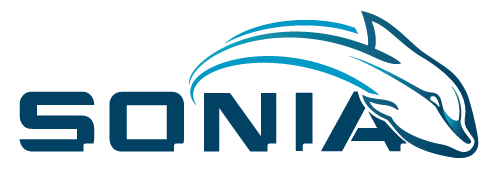Today definitely was a long day. We arrived on to the competition site around 5h40 am and we left around 7h15 pm. The results of the fury of the team start to appear, but the final runs are coming fast.
Some of the less experimented team begin to test, so we asked for more test time. The test period starts spacing from each other. The advantage that we have compared to them is that we start the every test ready. The inconvenience with this situation is that we will eventually have only 3 test of 30 min per days. That not a lot for that amount of code to test, but the experience of the team member tells us that our reputation and the links that we build with the other teams grants us some sympathy from certain team that don’t need their test anymore.
But we should not rely on that, let’s rather wish good luck to all the teams that make that competition so awesome.
We had 4 tests today, the priorities were to make the hydrophones and the mapping system work. We entered the water at 7h30 am and we quickly noted that the work that had been done on the hydrophones did not allow it to work properly. On the mapping side, we had a few data that diverged from yesterday results despite the absence of changes on the settings. According to our delegate to the Sonar, we should not worry. Ok, we believe in you Frank!
The second test allowed us to deepen some solutions for the mapping and we tested the buoy mission that used to be executed at Montreal, but whose reliability has to be confirmed at the Transdec.
Good news! The mission works 80% of the time. Actually, it works well when we arrive directly in front of the buoys, but we have uncertain results when the alignment angle is to high.
The only counterpart is that the mission takes too much time to process.
On the hydrophones side, the second test was not concluant at all. With absolutely no result after all the solutions that were applied, it left us with no idea of where the problem was from. We tried to analyse it with a different angle, but no succeed. We finally decided to test in the little pool provided by the Competition and just like magic, the hydrophones began working.
During the third test, as the hydrophones seemed to suddenly work well, we acquired data of the pinger. Even better, we were able to hear all the pings of all the pinger of the pool. The objective of the test was to optimize the quality of the data that we got from the Sonar and to increase the rapidity of the processing of the point cloud. For the technical details, we separate the processing thread from the publishing thread. We were able to save a lot of processing power with an asynchron image publisher and the results were astonishing.
During the fourth test, a lot of hydrophone data have been logged. We will take advantage of the night to work on that data so we can test it better tomorrow.
No one knows if the issue was caused by the pinger or the hydrophone, but one thing is sure: we are back on the track! A major improvement of the fourth test on the mapping and vision side is that we successfully aligned on the pipe and then headed to the buoys using only the Sonar. More to come tomorrow!
On the menu tonight: we finalize a few UI issues for the mapping and we brainstorm on the missions. We revisit the objectives and the missions as well as the time that we should budget for these.
Finally, tomorrow we will confirm that the buoys, the fence and the pinger mission work, nothing less!
PS: It is very probable that tomorrow’s publication will be very short and straight forward. The sleep time estimate is around 4h. If we assume that tomorrow will be as long as today and that we will have to do the entire static judging for Friday morning, it will leave us with a bit less time for writing great novels. 😉
Long life to the Babe!
